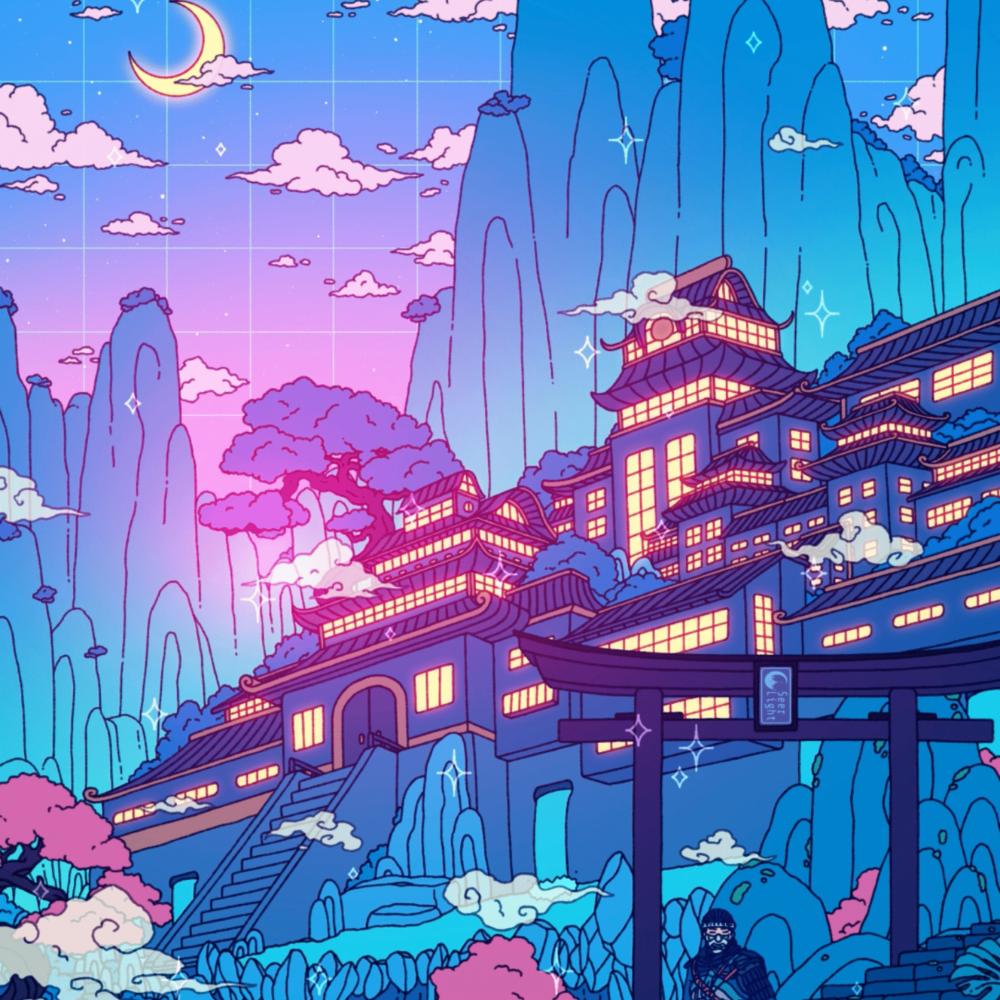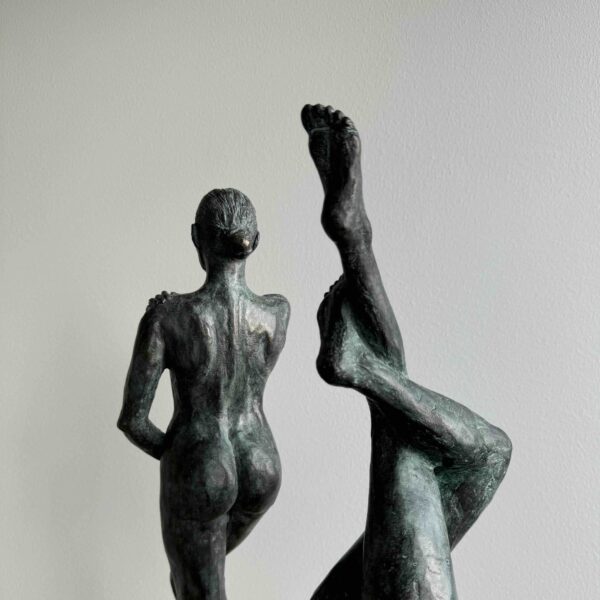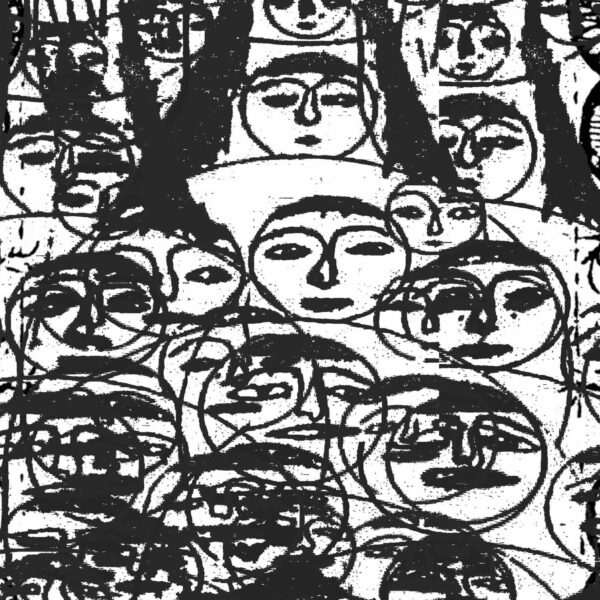Unpacking the Futuristic Nostalgia of Seerlight’s Work
Instantly recognizable for his vaporwave aesthetic, Seerlight is known for his detailed animated illustrations. Inspired by Studio Ghibli, Pokémon, and Naruto, his work is aesthetically rooted in nostalgia. He is the co-artist for Capsule House as well as an artist for Secret Garden. In this interview, we dive into Seerlight’s genesis, signature style, and journey from graphic design into the world of crypto. Please note, this conversation has been edited for brevity and clarity.

Q: How did you initially get involved with art? What does that background look like for you?
SEERLIGHT: I was always drawing as a kid, I drew for basically my entire life. I started digital art in high school. There was this computer class I had and one of the assignments was to draw a pie in Photoshop, and that’s how I got into digital art. The first place I started posting my work in was DeviantArt. Later I moved on to Instagram, and that’s where I’ve been ever since.
Q: What was the moment where you decided: I’m going to do this full time, this is the path that I’m going down?
SEERLIGHT: The first thought I had was when I was in college when we were supposed to choose our majors. I went with art. The traditional art career path is very hard to do, and I had to figure out a way to monetize my work. The solution that came up for me was social media. After I graduated from college, I had a job as a graphic designer– for three days– before I realized I didn’t want to work as a graphic designer, and I quit. I’ve been doing what I’ve been doing since then.
Q: Tell me about your journey down the crypto rabbithole.
SEERLIGHT: It was back in 2020 when I received this email from Nifty Gateway talking about crypto stuff and I had no idea what they were talking about at the time. Then my friend, Eric, messaged me and was like, ‘have you thought about getting into crypto art?’ and I was like, I don’t know what that is. I started looking into it more seriously, and I dropped a piece that February. It was that Android Girl piece.
Q: Where is the intersection of crypto and art for you? How do you view that spectrum?
SEERLIGHT: I feel like the whole crypto aspect supplements the digital art aspect. There have always been digital artists even before crypto was a thing. So now that crypto is here, it feels like more of a tool to bring more legitimacy to your work, in a way. Digital artists didn’t really have a way to sell a single piece until NFTs became a thing.
Q: Are there any big moments in your personal NFT history that you think about?
SEERLIGHT: Last year, in the span of two months, I had 11 all-time highs in a row. I had no idea what was happening at the time, but I was freaking out every day after seeing a new all-time high sale.
The highs were like–everybody wanted a piece for me, but there is a certain point where the highs get a little bit too high, and you feel like you don't want to disappoint your previous collectors. So you feel that pressure to keep going up only. It's not possible to keep going up only, eventually the all-time highs have to stop at some point.
Q: That’s massive. Just that amount of attention on your work is, I’m sure, very special as well. What are the highs and lows of that experience?
SEERLIGHT: Yeah, it was great, but overwhelming too. The highs were like–everybody wanted a piece for me, but there is a certain point where the highs get a little bit too high, and you feel like you don’t want to disappoint your previous collectors. So you feel that pressure to keep going up only. It’s not possible to keep going up only, eventually the all-time highs have to stop at some point. That was the pressure for me.
Q: What are the inspirations behind some of the Seerlight pieces that we know?
SEERLIGHT: A lot of my inspiration comes from childhood nostalgia– all the shows I watched as a kid– Pokemon, Naruto, all that. I’m also very fascinated by retro aesthetics, the nineties and eighties. Every Saturday I remember I used to watch the Saturday morning cartoons. It was the highlight of my whole week. I pull a lot of inspiration from that time period and put it into my work.
Q: What is the process like behind creating a piece?
SEERLIGHT: In the initial phase, the concept phase, I do this thing where I look through a bunch of material on whatever subject I’m doing– maybe it would be Naruto, or it would be Pokemon. I’ll be researching a couple of settings, see what inspires me, and then I would go into the sketching phase, sketch out a couple of compositions, and then if I want to, I would do some line art. The longest process is in line art. It could take anything three weeks to a month to complete, that includes all the frames and everything. Later I would come in, color everything, and then basically just finish off the piece from there.
Q: Are you a draw all night kind of person?
SEERLIGHT: Yeah, very much so. During the daytime it’s very hard for me to focus. I would just do my concepting or light sketches during the day, and at night I would focus on all the gritty details.
Q: In your own words, what is that Seerlight style?
SEERLIGHT: I think the closest I’ve come to defining it is a neo ukiyo-e type style, crossed with the Japanese whip block styles. I think the most iconic one was The Great Wave off Kanagawa. It has these very organic looking lines in them. The nostalgic color palettes and all the sparkly elements I put into it, to make stuff pop.


